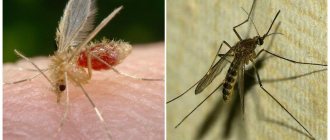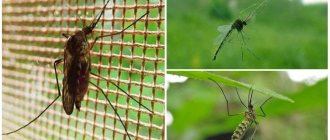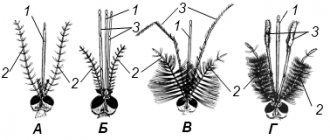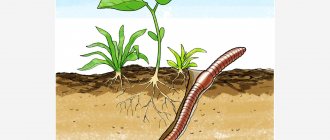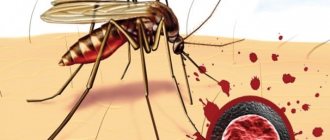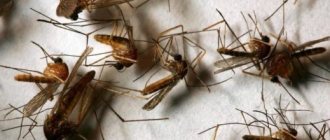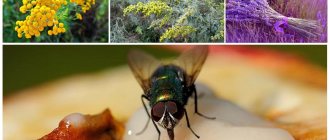moose fly
An insect of the bloodsucker family. The second name is deer bloodsucker, in everyday life they are often called bloodsucking beetles. The species is very numerous in Russia, both in the European and Asian parts. Having found a host, the insect sheds its wings and remains to live on the animal. Due to the lack of wings, the bloodsucker is often confused with ticks. Flies are similar to these arthropods not only in body color, but also in the tenacity of their legs.
There are 778 species in the family and all of them are blood-sucking parasites.
Bloodsuckers rarely attack humans, but such cases do occur. The bites of bloodsucker and horsefly are comparable in pain.
Determining who bites at night
To understand which parasites attack after sunset, you need to carefully study the signs of the affected areas of the skin and correlate them with the characteristics of the effects of different insects. Their lifestyle plays an important role. Of the parasites considered, bed bugs, mosquitoes and linen lice attack at night.
If bites appear only at night, and insects do not bother you during the day, then it can be said that the bed is infested with bedbugs.
Mosquitoes and linen lice can bite around the clock, however, the first of these parasites attack more often at night. Linen lice need food much more often, so they must feed every 3-4 hours. This means that traces of these insects appear during the day. House fleas only bite in the morning, so you shouldn't suspect them.
Interesting video: The most painful insect bites
Nasty
In addition to synanthropes, there are bloodsuckers that have not left their natural habitat, although some of them can live in the city. Most of these insects are united by the concept of “gnus”. A collection of blood-sucking flying organisms called “gnus” – insects with two wings of different sizes, united only by the need to drink blood for reproduction. The totality of the gnat includes:
- horseflies;
- autumn fireweed;
- mosquitoes;
- midges;
- biting midges;
- mosquitoes;
- tsetse flies.
The very concept of “gnus” came from Siberia, where this word was used to describe small blood-sucking insects.
Horseflies
The largest flying blood-sucking insects in Russia. These are flies that need to drink blood to reproduce. Horseflies live in forest, steppe and desert zones. Most species stay near water bodies, as the larvae develop in a humid environment. Only females drink blood. In addition to the painfulness of a horsefly bite, insects are dangerous because they carry infectious diseases. This family of bloodsuckers is active during the daytime. They prefer heat. In the early morning and at dusk they do not disturb the animals.
Autumn burner
A small fly, very similar to a house fly. Often these two types are confused. But the brownie is not a bloodsucker. A distinctive feature of the autumn lifer is that it is an insect that drinks blood differently from other bloodsuckers. The zhigalka does not pierce the skin, but scrapes off the top layer and licks off the released liquid. At the same time, she releases poisonous saliva, which thins the blood.
The most famous insect is the bloodsucker. Even city residents are familiar with it, since these blood-sucking dipterans often breed right in the basements of houses. There are many types of mosquitoes, some of them are completely harmless. Of the blood-sucking mosquitoes, the females are the ones that parasitize. Without a portion of blood, the mosquito will not be able to lay eggs. Mosquitoes actively hunt at night.
We suggest you read: Microscopic insects in the apartment
Small dipterous insects that are part of the “gnus” group. The midge lives on all continents. Females are blood-sucking, males feed on nectar. They leave more swelling than mosquitoes. The midge does not pierce the skin, but cuts it. Saliva with anticoagulants is injected into the wound. Insects are active in calm weather at temperatures of 8-30°C. In windy weather they are blown away. Midges carry many diseases that are dangerous to humans.
Mokretsy
Very small insects are bloodsuckers that look like mosquitoes. They live everywhere except Antarctica. Midge is the name of a family, not a species. There are genera in the family that feed only on nectar or are predators. There are also genera where the females are blood-sucking and the males are “vegetarians”. Females of blood-sucking species are included in the “gnus” group. Insects are capable of transmitting infectious diseases.
Insects that parasitize humans
Bedbugs most often live in human habitation, but they can also be found in bird nests, as well as in poultry yards. In the house, insects get into the cracks between floorboards or behind baseboards. The insect is distinguished by a flattened body and tenacious jaw apparatus.
The size of the bug is small. An adult reaches a length of 0.5 centimeters. After feeding on blood, females begin laying eggs. Several hundred new parasites may appear during the season. Not only adults feed on blood, but also larvae and nymphs.
Fleas are also inhabitants of floors and crevices. There are human and rat fleas. They love dry garbage or rodent burrows, where there is enough food. They reproduce quickly. A female that has entered the house will soon have offspring that are just as hungry for the blood of humans and animals.
These blood-sucking insects are distinguished by their laterally flattened body and piercing jaw apparatus. Insects are able to survive in unfavorable conditions (lack of nutrition or low temperatures) for up to two years. In rural areas, fleas easily migrate from barns to owners' homes. Insect bites are painful and can cause an acute allergic reaction.
We suggest you familiarize yourself with: Multi-legged insect in the apartment
Insects are dangerous for humans, first of all, as carriers of the causative agent of typhoid fever.
Lice are true ectoparasites. There are three main types of these insects that annoy humans: pubic, head and body louse. The pest's body is somewhat flattened in the abdominal region, and its legs are equipped with hooks that help it stay on the host's body.
Pubic species are transmitted mainly through sexual contact. They live not only in the pubic hair, but also in the beard and armpits.
Head lice are found exclusively in the thick scalp. Their presence can be detected by their dull gray teardrop-shaped nit eggs.
Clothes types hold on to linen folds. They can often be found in bedding. Parasites die at a temperature of 55 degrees and are not at all afraid of water or cold.
An increase in human body temperature provokes insects to migrate. They are capable of carrying pathogens of the rash and relapsing type, as well as Volyn fever.
Poultry eaters are a real scourge of poultry and livestock farms. Parasites cut off the undercoat or fluff, causing large areas of skin to be exposed. They feed on the upper layer of the epidermis, causing severe itching and weight loss in poultry and animals.
Three types of parasites: lice, bedbugs and fleas feed on the blood of animals and birds. Most bedbugs and fleas visit their hosts only while feeding, living on the dirt floor or in cracks. These species easily penetrate human habitation, transferring pathogens from animals to humans. Fleas, for example, are carriers of plague.
Botflies harm cattle and sheep. Females lay larvae under the skin of animals (usually in the leg area). During development, the larva moves under the skin, reaching the back. An abscess and fistula form here. The adult larva climbs out through the damaged skin and falls to the ground, where it continues to develop.
We suggest you read: How to kill fungus in the house
If the animal managed to gnaw the larva out of the skin with its teeth (this is what horses do), it completes its development in the stomach and then comes out along with feces.
Bloodsuckers
Representatives of two-winged insects. They are found in all corners of the world (except Antarctica). Highly specialized blood-sucking organisms that infect only warm-blooded animals. The species is viviparous - females give birth to several mature larvae.
They have a fairly flat but wide body and tenacious limbs. Almost all types of insects do not have wings at all.
As you can see, there are many “vampires” who want to drink blood. Therefore, to prevent such situations before going on vacation, it is important to take care of safety: purchase repellents, remedies against allergies and inflammation.
